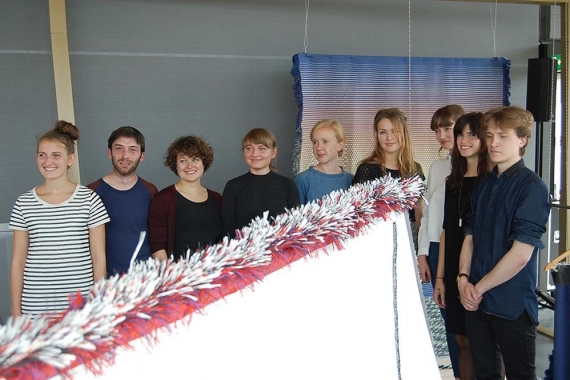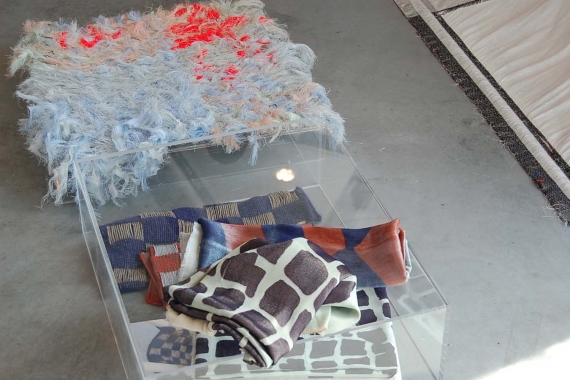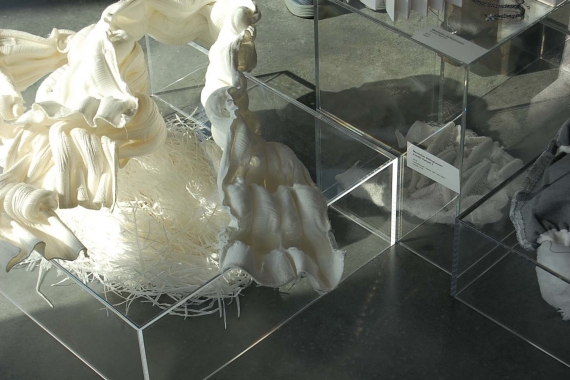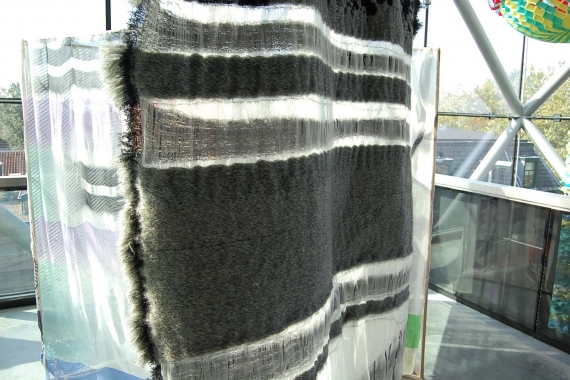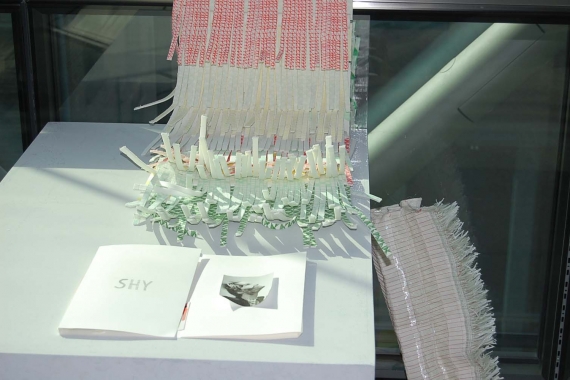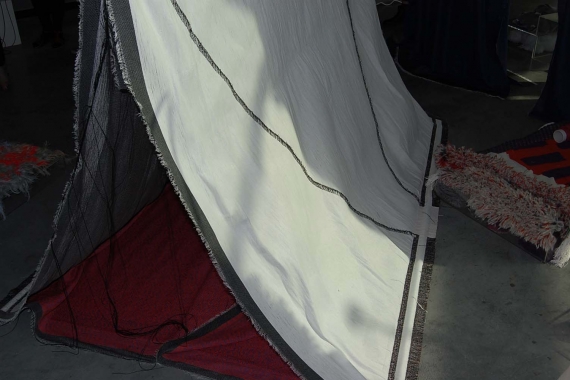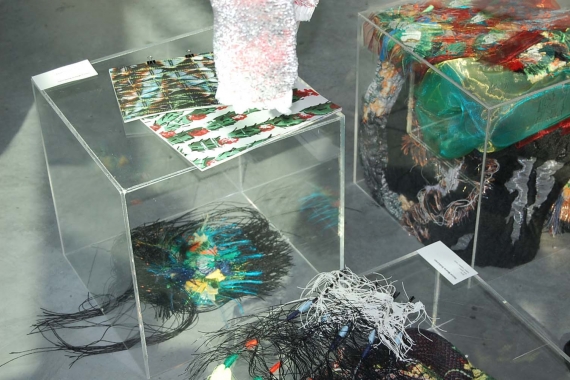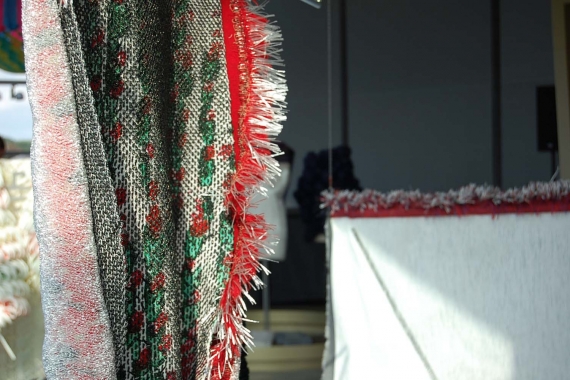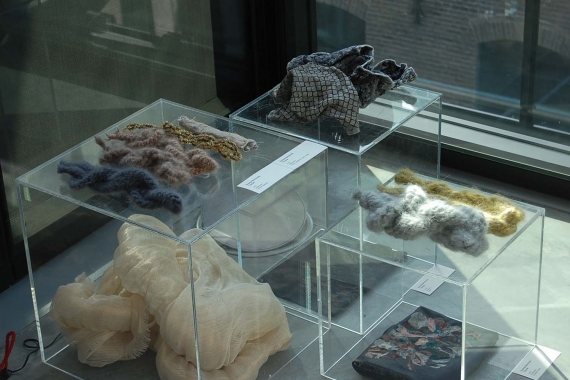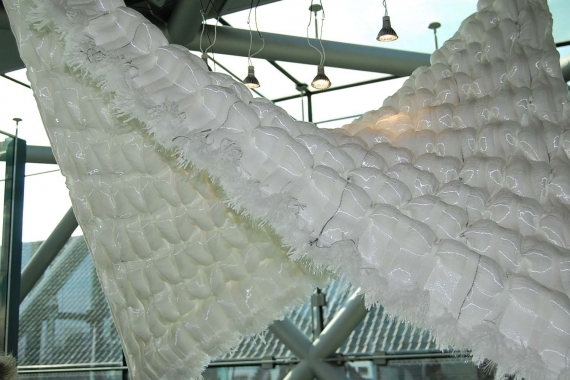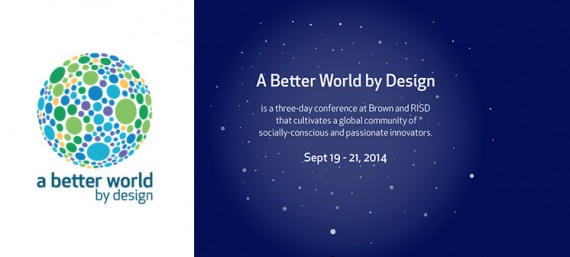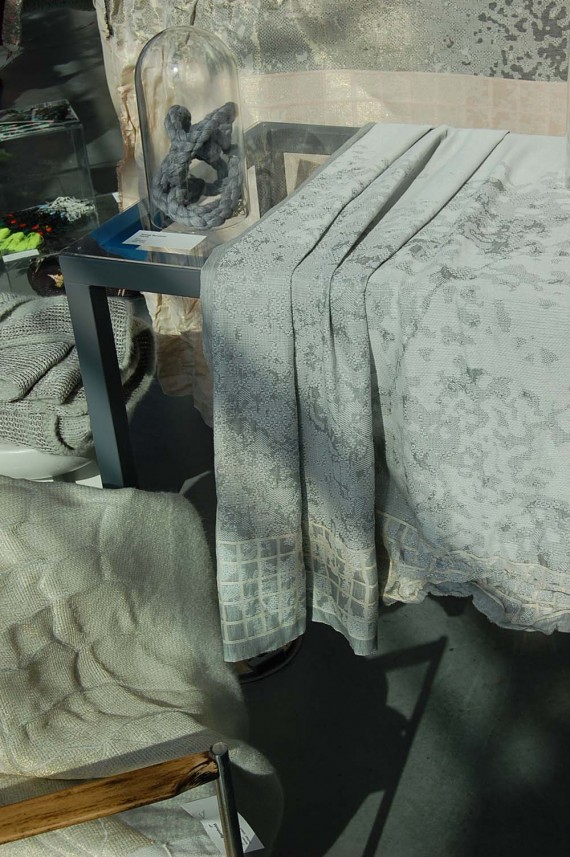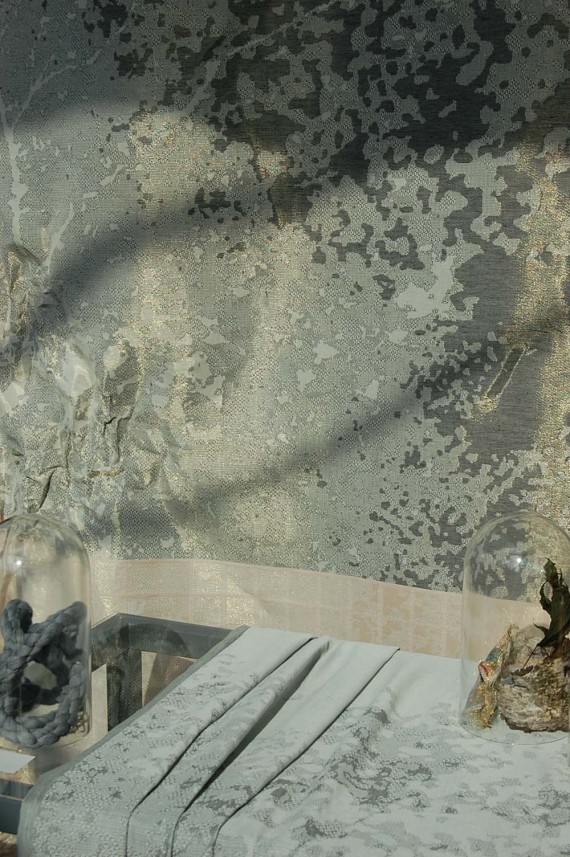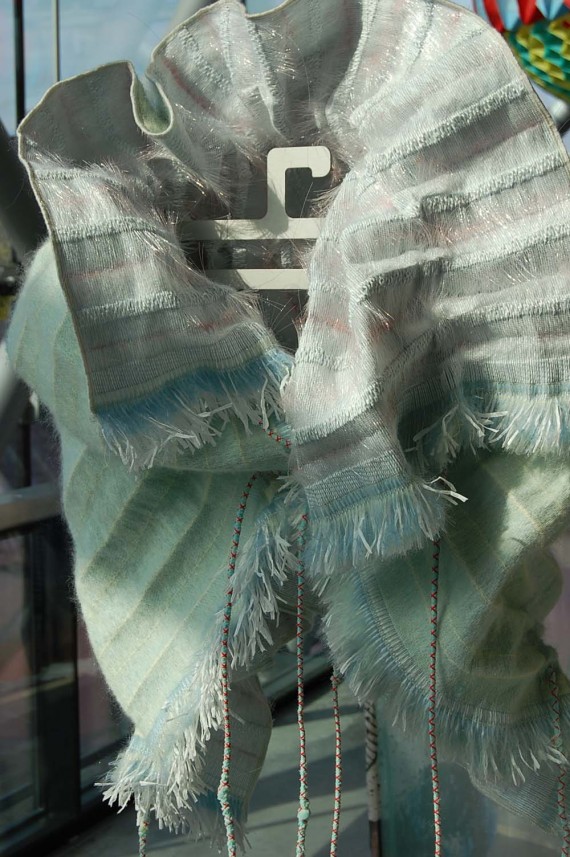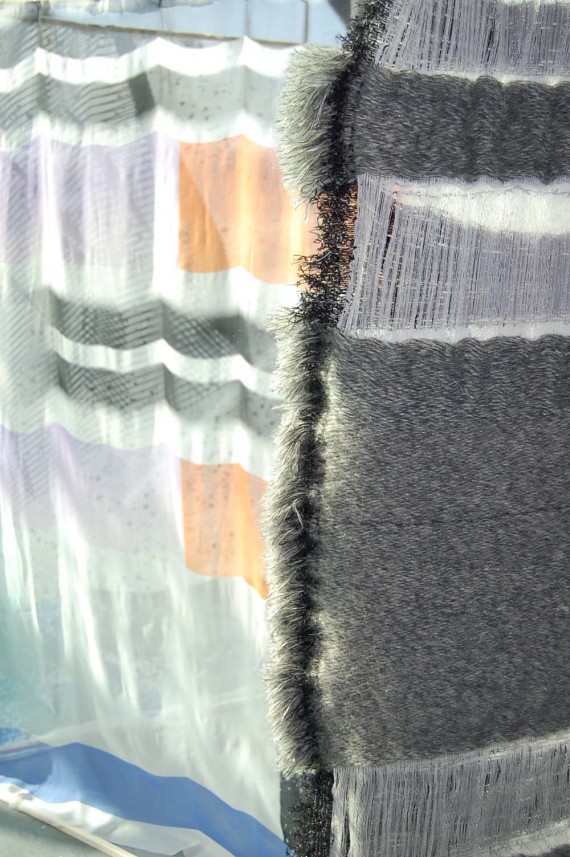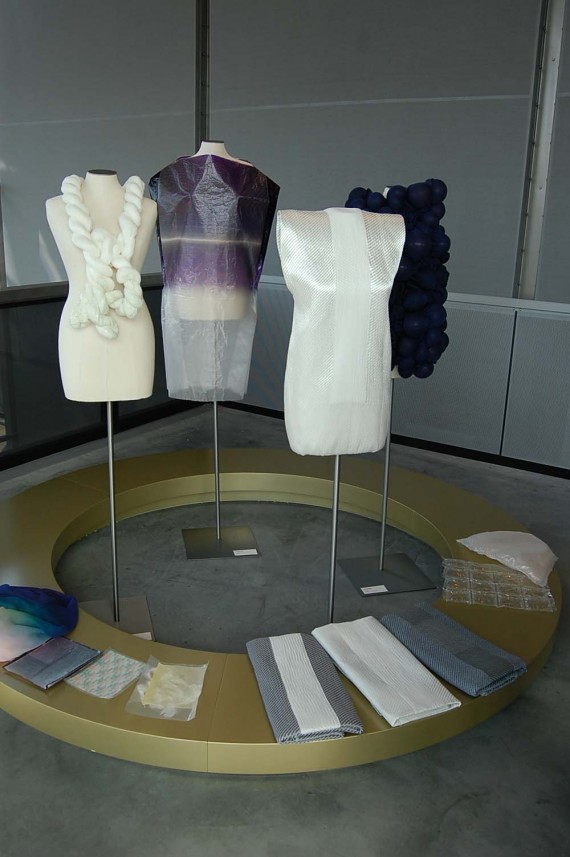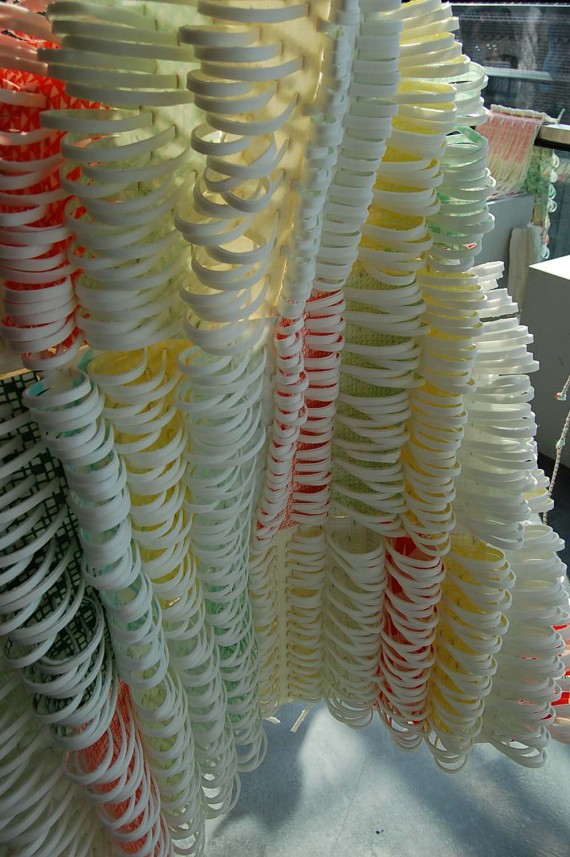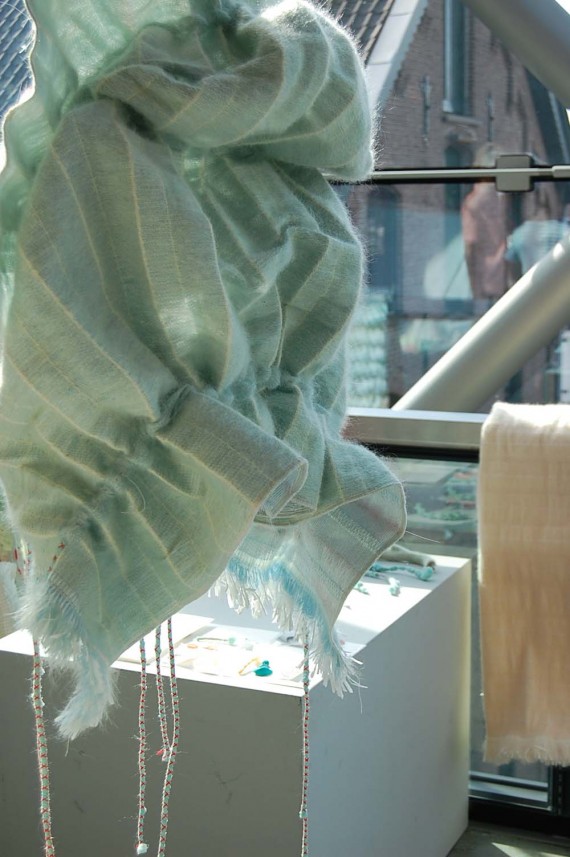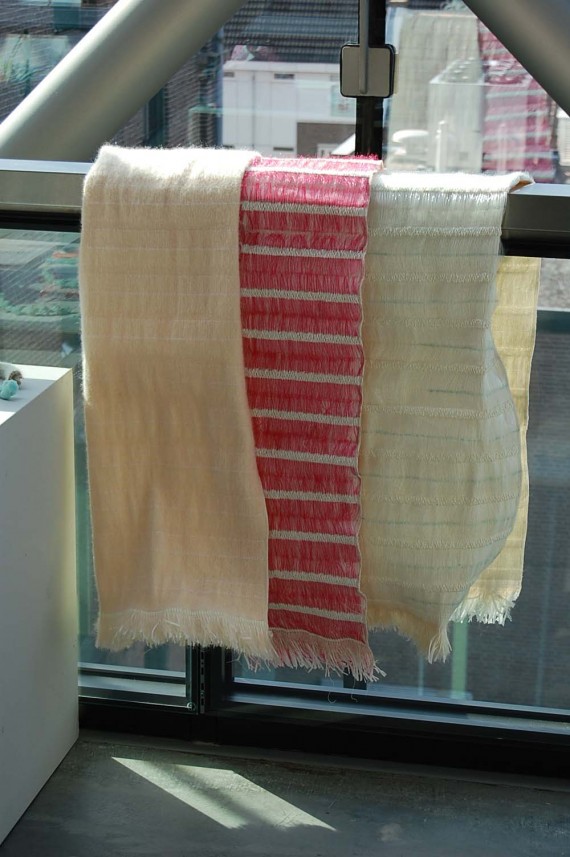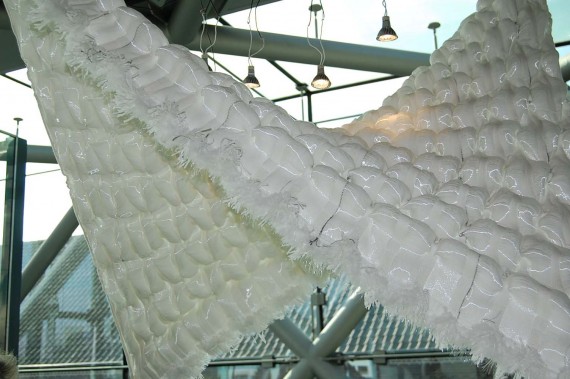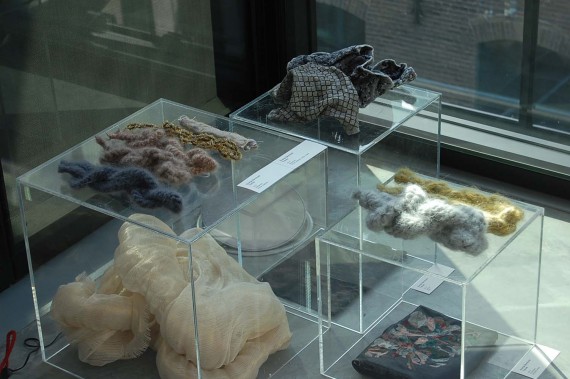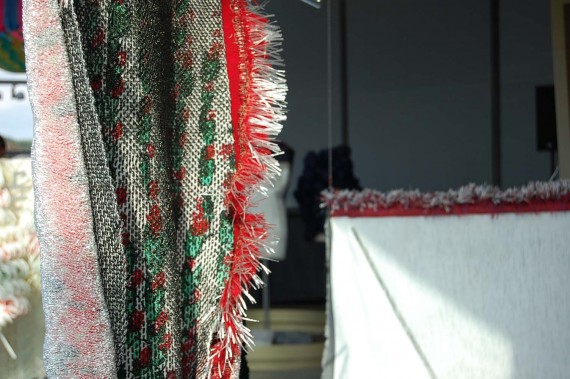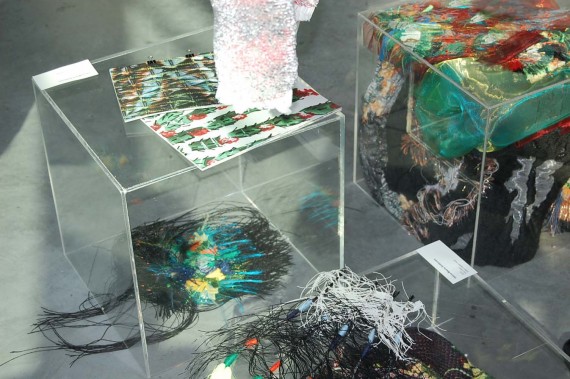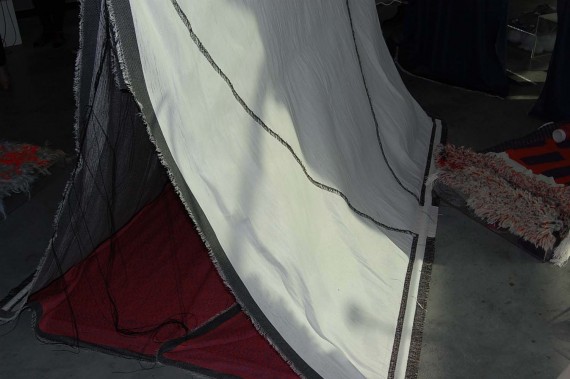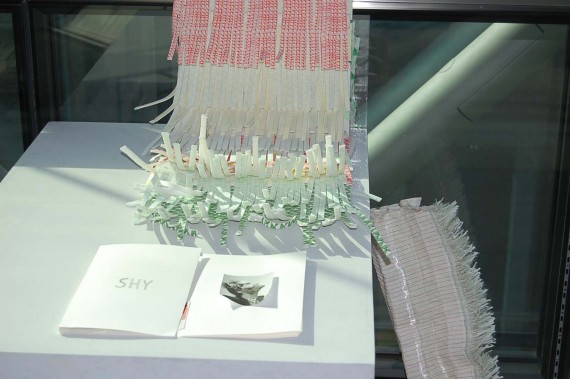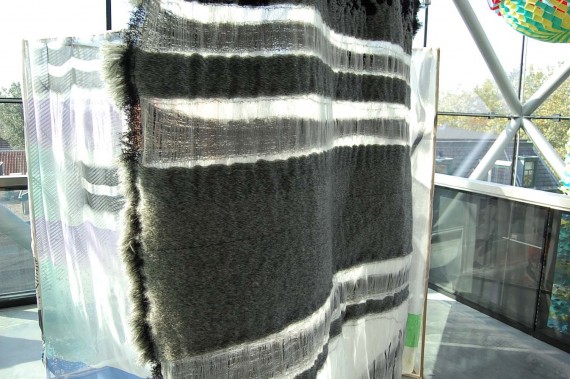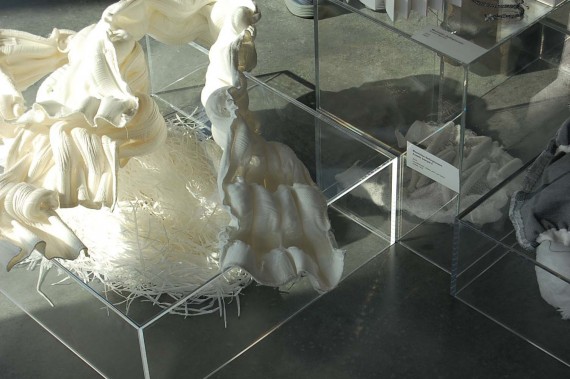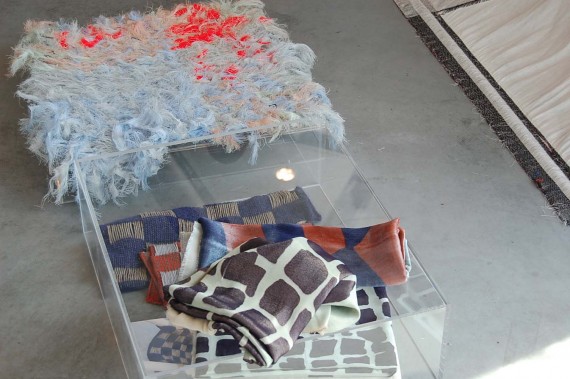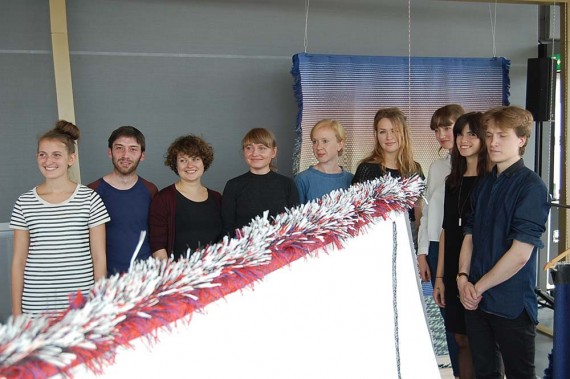Push boundaries with ETT students
For the sixth year, the TextielMuseum is organising the European Textile Trainee (ETT) programme. Nine talented, international master’s students with a passion for textiles, technology and materials, will immerse themselves for five weeks in the possibilities of textiles. Marina Toeters coached the students throughout their process. More info >>
These 9 students made me extremely proud on what they developed in just a few weeks together with all the experts in the Textiel Museum.
Maximilian Bellinghausen: auxetic tent structure, Kunsthochschule Berlin, Germany
The contemporary guideline towards lightness favours textiles for their quality of covering large spaces with little material, as seen in the works of Frei Otto.
Adding on to this dispositv, a bionical approach towards textiles enters the idea of having a textile with a more integrated than additive construction, rather multifunctional and merged, including nonlinear changes in elasticity. Following these premises I developed a woven fabric witch auxetic elastic behavior, integrated conductivity and translucent features.
Svenja Bernhold: traces, Burg Giebichenstein University of Art and Design Halle, Germany
Out in the nature everything is in motion. Wether it is growth, decay or erosion – the shape and the
condition of objects are in a constant state of flux. My interior textiles reflect this idea and seek to raise awareness for these natural changing processes. As every touch leaves a mark in the fabric, the fabric is constantly shaped and reshaped and visualizes the various ways we used it. Every fabric gets its unique imprint of usage. These individual stories invite us to rethink its form, function and our dealing with objects. The shift from an everyday object to an story-telling decorative accessory becomes fluent.
Hanna-Maaria Sinkkonen: spread the picture, Aalto University School of Art; Design and Architecture, Finland
This is a collection of textiles that, through bodily movement and shape, vaguely change their appearance of the construction and picture in and on the fabric, by using the characteristics of elasticity.
By shaping and visualizing with these textiles I try to build a world that I want to make exist: a world that comes from my present inner atmosphere. This atmosphere is a mix of my childhood experiences and things I´ve seen been and fascinated by lately.
I started by visualizing my inner world through painting and handcrafting pieces; to then express the same richness in industrially produced textiles.
Magalie Delbeke: minus+, KASK School of Arts, Belgium
This textile collection adds an active and interactive factor to your life. The unnoticed touch of textile on your skin is something that can influence your mood. Each textile has two states, you choose one depending on your mood.
My first item triggers activeness when feeling passive. I used a tactile approach and looked for materials that give a tingling sensation. My second focuses on shyness. For this I created a visual interaction. You can uncover patterns so others focus on the visuals instead of you. Rebuilding the textile gives a meditative effect.
I’m fascinated by people’s emotions and I want to provide playful textiles to make emotions comfortable.
Irina Mityayeva: silent visions, LUCA School of Arts Ghent, Belgium
There is something about transparency that seems mysterious and incomprehensible.
Exaggerating this thought I combined transparent layers, concentrating on their translucent qualities. Alternating reality through prints, displaying my visual repertoire, I build up a dialog with the spectator, that is meant to surprise. It is much like telling a story without using words or creating a journey through my contemplations and fascinations. Fascinations that consist of unconventional graphical shapes and colour.
Elena Schwörer: close to water, State Academy of Art and Design Stuttgart, Germany
I developed fabrics that will match our new environment, as by far the largest habitat on earth is the ocean.
It captures about 70 percent of the earth’s surface, which is more than twice as much as land. The ocean is a new place to live. What are the new requirements?
I focused on floatable and water resistant materials and yarns with smart features. My pieces help people staying easier on the surface of the water and keep the body dry. They provide protection and well-being in the new living environment.
Through the research for these pieces we get a step closer towards being able to live in a world surrounded by water.
Thea Meinert: light experience II, Bergen Academy of Art and Design, Norway
I use drawing as an approach to what I do. I start with one line (the thread, an action) on a piece of paper (the passive), and add another one to it. Weaving intertwines the drawing in the surface, which is also active (the warp). For me to stick to the principles of drawing, I have to make each line (weft) as visible as possible, because this is where the story lies, and where the narrative and action takes place. The result is very loosely woven pieces, where every single weft and warp is essential to keep the cloth together. Structures that create open spaces and room for interaction, or maybe small pockets that can house some of the elements surrounding it, be it light, noise, or audience.
Laura Kirk Sørensen: a dialog, The Royal Danish Academy of Fine Arts, School of Design, Denmark
The tactile qualities of textiles seem contradictory in the combination with clean and reflective materials used in modern architecture – Therefore I converted a dialog between these contradictions into a contemporary context, asking how textiles can appear in an interior setting.
My focus was on the relationship between different materials and surfaces.The presented textiles play with combinations of textile materials and wood. This brings flexibility, tactile experiences and comfort in to a living environment.
The textiles are developed with inspiration from the transformations which appears in the reflections of glass and water. A transformation of a sharp profile into a more distorted and blurred expression.
Camille Berger: lost in layers, ENSAV la Cambre, Belgium
Fabric built in layers, allows deployment of the surface to shape it. It exceeds the limits of the loom.
I’m fascinated by the traditional technique of dividing the warp in multiple layers and the possibilities it gives. Using this technique I want to break the idea that it’s not possible to weave a 3D shape.
By weaving in layers one gets a flat piece of the loom and unfolds it into shape. Basically a finished product comes out of the weaving machine. There is no need for assembly after the production of the fabric.
I play with layers to achieve different applications, therefore I research materials and colors that fit the use or represent a function. During this period I explored the possibilities in different fields of textile design with just one technique of connecting layers.
And: We would love to thank Tamara Hoogewegen for all her support during these exiting weeks!


